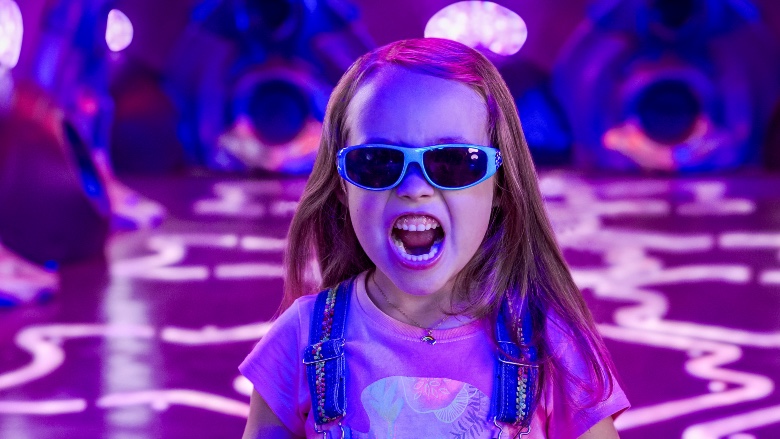
For nearly three decades, New Zealand’s Weta Digital has established itself as a go-to FX house, partially due to the work done there by co-founder filmmaker Peter Jackson since its formation in 1993 but also other projects that’s helped the company garner 6 Visual Effects Oscars, 7 VES Awards for Visual Effects, 10 Academy Science and Technology Awards and many more.
Filmmaker Robert Rodriguez has earned a reputation for himself as being similarly hands-on for doing his own VFX through Troublemaker Digital for all his earlier films like Spy Kids and The Adventures of Shark Boy and Lava Girl. For his 2019 film Alita: Battle Angel, Rodriguez turned to other VFX houses including Weta, and he’s continued that route with his new family superhero film, We Can Be Heroes.
Thedirect sequel to Shark Boy and Lava Girl that follows the kids of the superheroes that inhabit the world of Rodriguez’s popular earlier film. Into this world comes tween Missy Moreno (YaYa Gosselin), who doesn’t have powers, but when her superhero father (Pedro Pascal) is kidnapped by aliens, she calls upon a group of younger powered heroes, all sons and daughters of the city’s adult superteam, who have also been captured. This includes the youngest, Guppy (Vivien Blair), the daughter of Shark Boy and Lava Girl, who has her own powered superset. The movie also stars Boyd Holbrook, Christian Slater, Adriana Barraza and more.
For We Can Be Heroes, Rodriguez mixed things up with Weta taking on some of the more difficult VFX-laden scenes
Below the Line spoke with the film’s VFX Supervisor Dan Macarin and Animation Supervisor Stephen Clee about some of the major contribution Weta brought to the film, including the epic final battle between the kids and the villainous “Squiggle Monsters.”

Below the Line: If we can, let’s start with your respective backgrounds. Daniel, I know you’ve been at Weta since Avatar, but how did you get into VFX originally? What was your ramp-up into this world?
Dan Macarin: Architecture. I guess as quickly as I could run through this, I had an architecture background, and after going through building codes and state regulations and safety protocols on designs, I was much more interested in creating something that wasn’t possible, and that I could design in any way I wanted, and 3D gave me that ability and creative openness that a lot of the architecture wasn’t able to do. I went into commercials in New York for many years, and moved into TV and film going to Australia, L.A., and here in Weta in New Zealand. It just kind of grows as you start out in the industry, because a lot of people when they go into 3D, go in as generalists, because they’re trying to write their own stuff, they’re directing their own stuff, they’re lighting, they’re animating, they’re modeling. As you get into the bigger studios, people become more and more specialized as they go. Mine ended up going in a more lighting direction as obviously, Steve’s took a more animation direction, and it just continued forward from there.
BTL: Stephen, this is your first project with Weta, even though you’ve been an animator for a lot of great movies. What was your journey to working at Weta?
Stephen Clee: I’m from Vancouver originally, and I worked in Vancouver for about 15 years, and I was supervising there for about the last five. We had a kid, and we wanted to make a bit of a change, and we were looking all over the world and seeing where we wanted to work. This was right around the time that I think the last Planet of the Apes was coming out. We just really, really respected the work that Weta was doing, so I tried to get a job down here. I was successful, thankfully, and I came on just as an animator just to help out with a couple projects at the beginning. I was working on Lady in the Tramp with Dan there, and I was also on a couple other small ones, and then, this was the first supervising job at Weta. I’ve been at Weta now for two years as of next week, actually. This was the first project I worked with Dan. Yeah, I was just looking for a change, really.
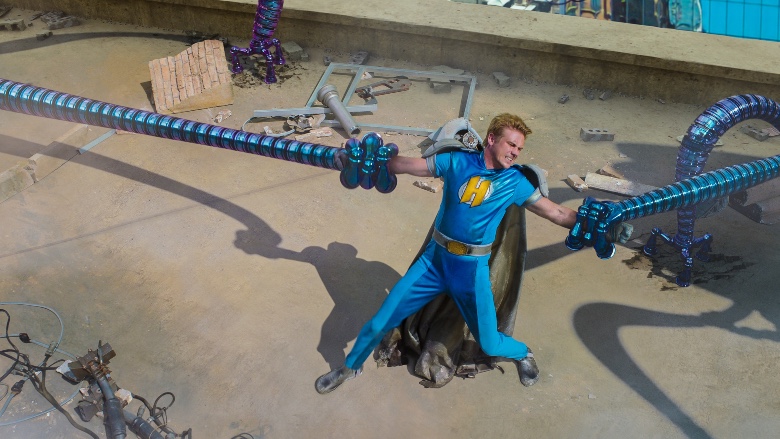
BTL: Robert is kind of known for having his own in-house VFX studio and doing everything right from his garage. For Alita: Battle Angel, he began working with Weta, not with you guys specifically, so when did he get you involved with We Can Be Heroes?
Macarin: Pretty early on. Robert is very attentive to all the aspects of his films, so he knew the budget he was going after, he knew the creative he was going after. He knew the style, the edit, and he was quite happy after Alita to come back and have Weta rejoin. He’s grown very comfortable with our team and with how we manage VFX. He knew that a lot of the crazy ideas that he can come up with that are so fantastical he knows that we love that kind of stuff, and we’ll just run with it and show him things quite quickly. That’s kind of how he likes to work. He’s just constantly coming up with new creative ideas. He brought us in early, went through all of the ideas he had at the time, and then was just going through the scripts and making sure if we had ideas or input or things that we feel like we could add in there and just open to the creative process, and then he just jumped right in after that and started shooting.

BTL: What was the first thing you worked on, the creatures or the kids’ powers?
Macarin: The first thing we were working on was the thing that we felt was going to be one of the most difficult things to illustrate, which was the “Squiggle Monsters.” It kind of went around the thing of whether this was going to be a 2D animated style thing, because it was like a cartoon brought to life, and whether that would have an old Ghostbusters hand-drawn type frame-by-frame motion, or whether that would be something brought into 3D. The On-Set Supervisor Charlie [Iturriaga] had done a stop motion test, where he took actual cassette tape and turned it into a little monster and did a stop motion test on it. Just that 3D aspect of it, Robert really liked but somehow wanted to translate that into moving 3D lines with irregularities and constant flow. Because of the challenge on that, I think that was what we tried to go after first.
BTL: I’m going to ask a question for the laypeople that might be reading this: What’s the main difference between a VFX supervisor and animation supervisor. Is there a separation in the duties?
Macarin: Steve and I work really well together, and the creative part is very collaborative, in a sense, but everything that has to do with timing and motion and the feel and flow of the shots, and everything, will all flow into where Steve is going to have the most input. The more visual, the colors, the balance, the overall aesthetic is going to be where I’m going to take in. At the same time, if there’s anything — this goes for both me and Steve — depending on the project, if you’re advancing technology, in both the visual aspect, I would handle that, or if it was both the motion or the capture aspect or the camera aspect that would all go through Steve.
Clee: Pretty much it almost feels like my stuff is kind of at the beginning of the process, making sure the performance is there, making sure the edit is working, making sure the integration with all the characters… mostly focused on performance and storytelling on my side, and then once it’s kind of out of animation department, it’s going over to all of Dan’s departments to light and integrate and to make sure that it’s nested within the plate, and it feels like the characters are in there with the live action actors. He makes all my stuff look pretty, pretty much. I make it move, Dan makes it pretty. [laughs]
BTL: Were you also involved with creating the kids’ powers?
Clee: I think that’s a mixture between the both of us, depending on what the kids are doing. So for example, with Guppy when she’s balancing the water droplets up and down, we’re timing that movement with just spheres and passing that on to effects. When it gets a little bit more complex, like when she spots out the shark and it does the little swim down and the diver comes up to bite that, all of that base motion is coming from animation and then it’s going through effects to add water effects on top of it to break up the surface and make it feel like it’s actually liquid.
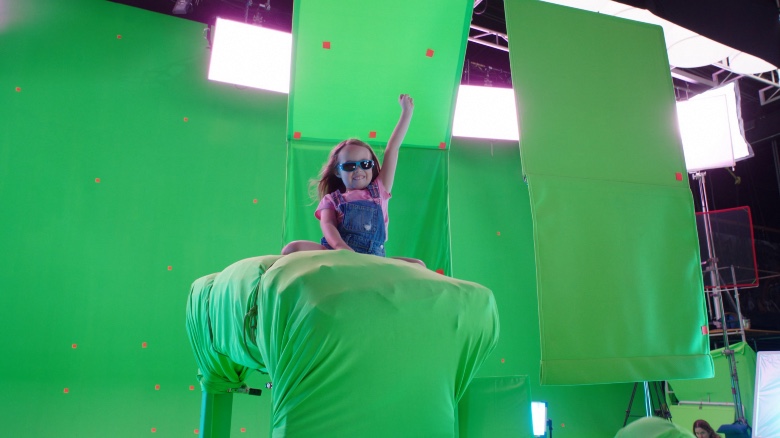
BTL: What were some of the challenges with integrating what you’re doing with what Robert shot, presumably in Austin.
Macarin: It helps a lot with Robert — and Steve had to join in on this as well on set — but with kids and even adult actors, when you’re doing visual effects-based things where their movements are integral with how we do the powers, and their movements, and what they do, what they say, how they react, all has an effect on what we need to do later. It’s difficult for actors to imagine in their head, “Okay, I’m moving water or being pulled by someone else’s imaginary arm or there’s a head there that isn’t actually there.” Robert is really good at directing them, of trying to get into their head of getting them to envision what is going to be there and where they need to look and how he wants them to react. Steve, as well, will kind of jump in there and say, “If you move your hand like this or you do these things, I can do this, this and this afterwards.” It gets everybody on set, and everybody involved on what the effect will hopefully be in the end.
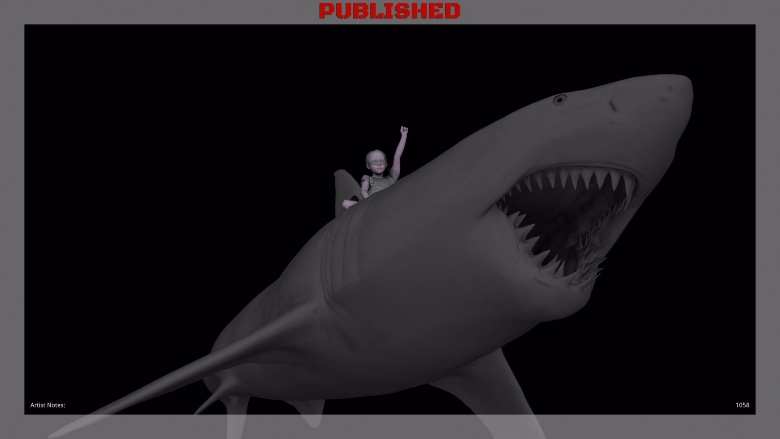
BTL: You were on set for most of this?
Clee: Just for a little bit of this one, Dan and I went on for about the last couple of weeks of shooting. It was really fun, because it was some of the parent stuff for this big adult superhero battle when they’re all losing at the beginning. When you’ve got miracle guy, Boyd Holbrook, when he’s pulling in the arms, and he’s getting yanked by the two scout ships and flying up, we had a little bit of input on that. It was really fun to collaborate with the actors on set, just to get some of the performance, because if you get it in-camera, it makes our job so much easier. Robert’s really good at that and Charlie, the client-side VFX supe, were really good at that. You can see throughout the whole movie with the kids with their powers, especially Noodles (played by Lyon Daniels), he’s always flopping around his arms and doing all of these things. They did such a great job – he had very floppy, very flowy arms with all of his movements, it made it really easy for us to kind of key off of that and get a believable performance for something that is pretty unbelievable. It was really cool how much they were able to get in-camera for that.
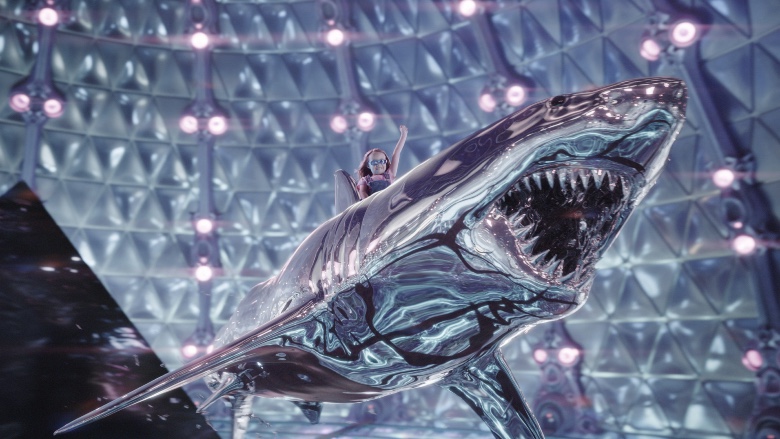
BTL: There’s something charming about the way they use their powers, because they’re still kids, and they’re learning how to use those powers, and it’s an interesting contrast between them and their parents, who are much more comfortable in their bodies and with their powers.
Clee: Yeah, absolutely. I was really impressed being on set, especially with Guppy. I mean, she’s so young, and it was really cool watching her do all the different movements and making sure that we can legitimize that. We’re always looking at eyelines and making sure that it feels like it’s tied to the motion that she’s doing with her hands and when she’s creating the water and the spheres inside of her hand and doing all the different shapes. She gave us a really good motion to work off of, so it felt really fun.
BTL: I know Robert has worked on The Mandalorian, which has pioneered the use of virtual production, so did he use some of that on this movie, using LED screens, etc.?
Macarin: A lot of that stuff requires a much larger preproduction time, set-up, setting up environments, getting everything prepped. The shooting schedule becomes significantly longer at the moment. For this movie, with the timing, because Robert has so many projects going on all the time, he was ready to go, and he wanted to jump right in. We kind of moved past that type of shooting and decided, “Okay, we’ll do it in Austin, and then we’ll sort out the backgrounds afterwards and get all that stuff prepped.
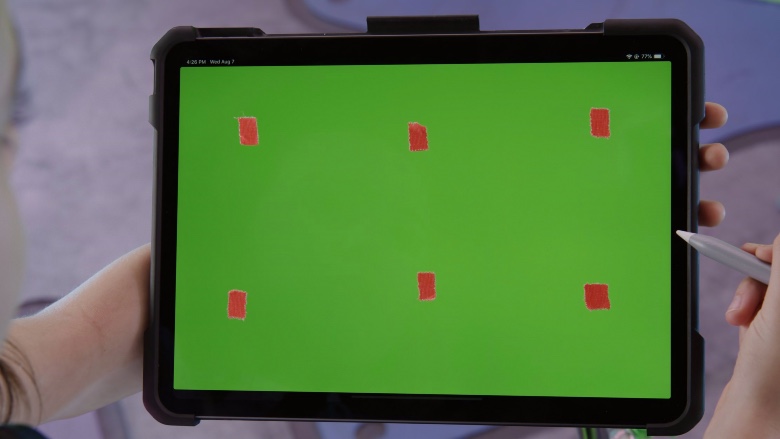
BTL: I was also curious about the timeframe and whether you had finished this before COVID hit or were working to finish up over the last few months.
Clee: Yeah, we transitioned the last two or three months. We went into a full lockdown here in New Zealand and we finished the project in lockdown. I was really impressed at how I was up and working at home within a day and my team was within another day. We were able to deliver on time, thankfully, through all of that. It was a little bit daunting at the beginning, but through Zoom and Teams and being able to work remotely, it was really successful. It just went from in-person meetings to Tams meetings, and it was a pretty quick transition and we delivered from home pretty much.
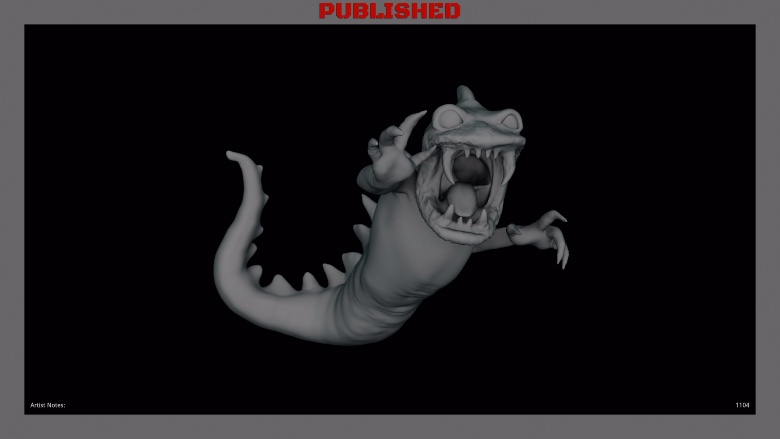
BTL: Is everyone at Weta still working from home or are some of you back? New Zealand seemed to be able to get rid of COVID pretty quickly. Not sure if that’s the case or not.Clee: It was pretty amazing. New Zealand, we went into a full lockdown for about two months where it was very restricted, and you couldn’t do anything, and they closed the borders. Now, we’ve got quarantine at the borders, and because all of our border is an ocean, it’s a little bit easier to kind of keep people out and to also limit how many people come into the country. We do have cases, but I think they’re all at the border currently, so for all intents and purposes, we’re still checking in. You have to scan a QR code everywhere you go, but a lot of us are back in the office, and it’s pretty much back to normal, which is good.
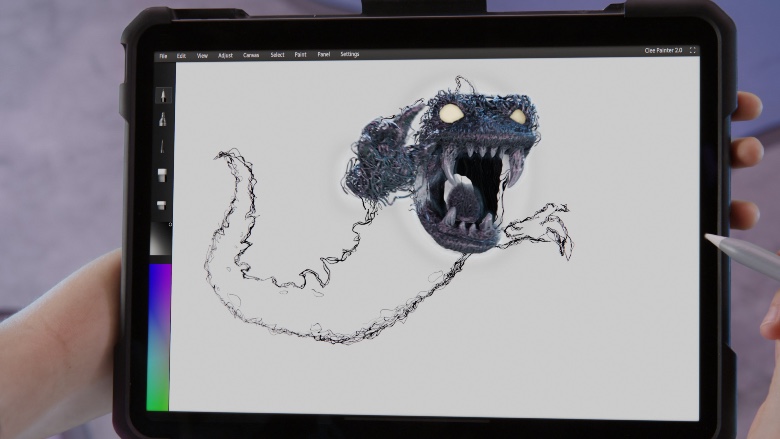
BTL: What about your team and how they’ve been affected, Dan?
Macarin: It’s kind of half and half. Some people love being in the office environment with communication and running into people and being able to go into someone else’s office and quickly talk to them. Others found during the lockdown that they really enjoyed working from home, and it’s hard to get them back into the office. Weta did an amazing job, like Steve said, with setting up everything, so that people could work at home at the same speed and efficiency as if they were working at in the office. That was the amazing thing on this project. We literally went from in the office to everyone working from home within a day with almost no loss in production — it was pretty incredible. At that point, we also realized, I guess you don’t have to come back into the office if you don’t want to? We can do this. The integration of Teams and everything else meant that it really didn’t matter if some people were in the office, and some people were at home or working remotely, and it was okay. I think until COVID is under control more worldwide, Weta would probably allow that kind of freedom to have its artists do what they feel is comfortable for them and comfortable for their families and not be restrictive one way or the other.
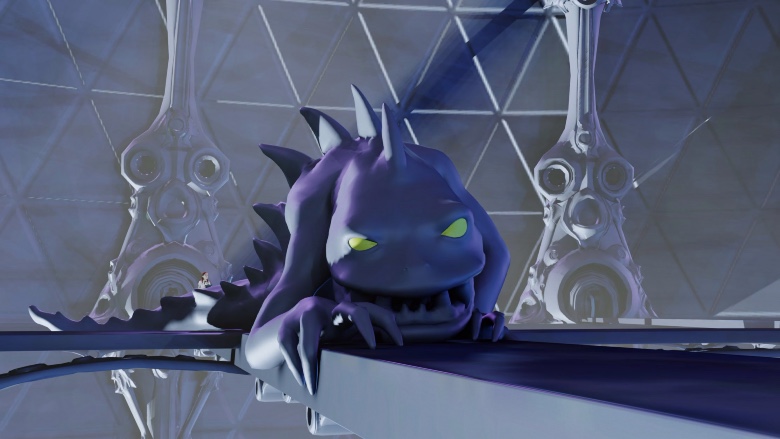
BTL: Are you feeling more productive at home or at the office? I feel that at the office, you have distractions in the form of other employees, but at home, you have dogs and kids and things like that?
Macarin: Sort of. I mean, you get client notes, and the dog jumps on your lap and you’re like, “Alright, a little more calm. It’s alright.” But there are distractions either way. I find I like working in the office, and I like working at home. It’s nice that we have the ability sometimes where I’ll go in and I’ll have morning meetings and then it’s like, “You know what? I’m going to take the afternoon and I have a couple of family things, and I’m going to work from home” and it doesn’t really interrupt our workflow.
Clee: Yeah, I think the ability to have a hybrid workflow has increased productivity huge. It’s been really nice to be able to come into the office and do my dailies with my artists and be able to talk to them in person and then in evenings, I’ll put my kid to bed and then if I want to jump on and do a bit more work and do some of my more administrative tasks, I find it a little bit easier if it’s quiet at home, and I can just jump on my computer. It’s a bit more freedom which is really nice. I think also for client calls and meetings and stuff, it’s really nice to have my own home set up and to be able to grab a coffee at home, it’s a nice environment. It’s usually quiet if my kid is at daycare, it’s really nice and quiet at home. No distractions.
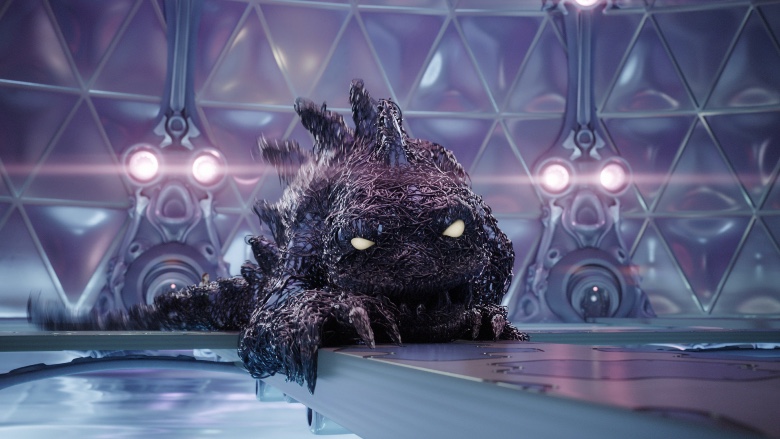
BTL: Great talking to you, and this is a particularly fun movie which I think is doing really well for Netflix. Kids seem to love it, and if I were 10 years old, this would be my favorite movie, and I’d watch it over and over.
Macarin: It was really interesting on this movie with a lot of the designs, because it’s things that we’re not particularly used to. We would look at some of the designs, and their simplicity and question like, “Really? This is what we’re going with? You’re sure with the colors? That’s a really, really vibrant color, supersaturated. We don’t normally hit the 11 button.” [laughs] Robert was really adamant about it, and I think correctly. He’s like, “It’s for kids, and all of these things are designed by kids, so the feeling of it has to be simple and colorful and beautiful and something that attracts kids’ minds and how they visually will see this.” It was a learning step for us, but it was well worth it, and it was really surprising in the end to see how kids reacted to it.
Clee: Yeah, I think as an animator, coming from a traditional 2D animation background and being able to work on something that’s so reliant on posing, and like Dan was talking about with the Squiggles, being able to exaggerate that stuff. You still want to ground it with the actors, but being able to do something cartoony and squash and stretch, it is something that you don’t typically get to do in VFX as much. We were able to get it a little bit cartoony; we were able to play out the tentacles and not make them too scary. They were supposed to be intimidating, but kind of fun with it, too. They’re supposed to be more gross than they are scary, I would say. That was fun, because it was a little bit of a different challenge. We’re so used to making stuff realistic and very rigid, and like Dan said, with very muted color schemes that fit into dystopian futures, so getting to work on a kid’s project that my son and all of my nieces and nephews can watch and have watched multiple times now. They just told me, “Oh, that movie’s so much fun! I get to watch something that Uncle Steve worked on!” [vs.] “Sorry, you can’t watch this one. It’s Rated-R.” It’s great to hear, “Oh, I’ve watched it three times.” My niece is like, “It’s my favorite movie!”
BTL: Right, it has the look of other kids’ animation where it’s simple, but it still captures your mind, because things are so crazy.
Clee: Yeah, it’s a different challenge. It’s more about the clear posing, it’s more about the silhouette and making sure that a kid can pick up exactly what your character is doing immediately. There’s not as much nuance there. It’s more just about in your face, like, “Okay, this is what this guy is doing, and this is what he’s about,” and trying to sell that immediately.
(From this project, Dan Macarin went on to work on James Gunn’s upcoming The Suicide Squad, while Stephen Clee is working on the Avatar sequels.)
We Can Be Heroes is now available on Netflix, and you can also watch a VFX breakdown of one particular scene in the clip below.
All photos courtesy Weta Digital and Netflix.





